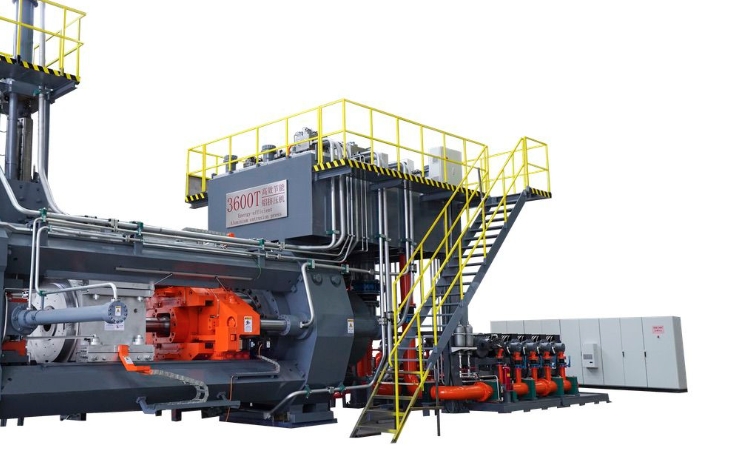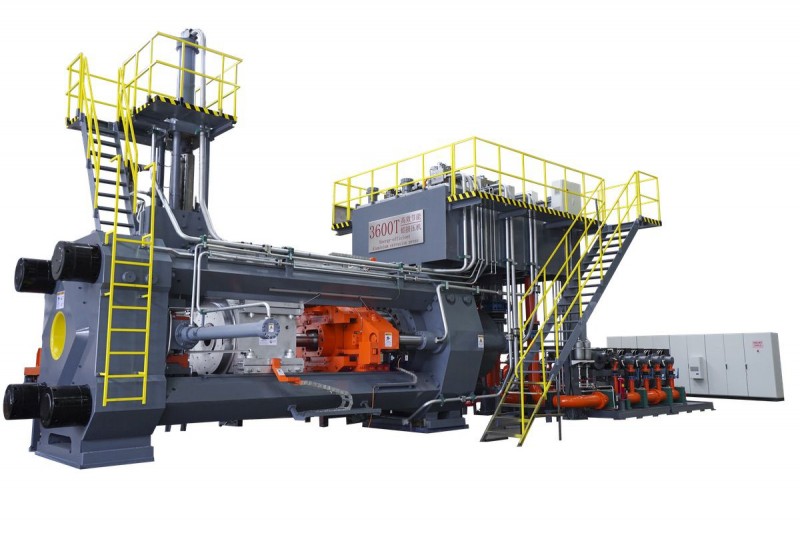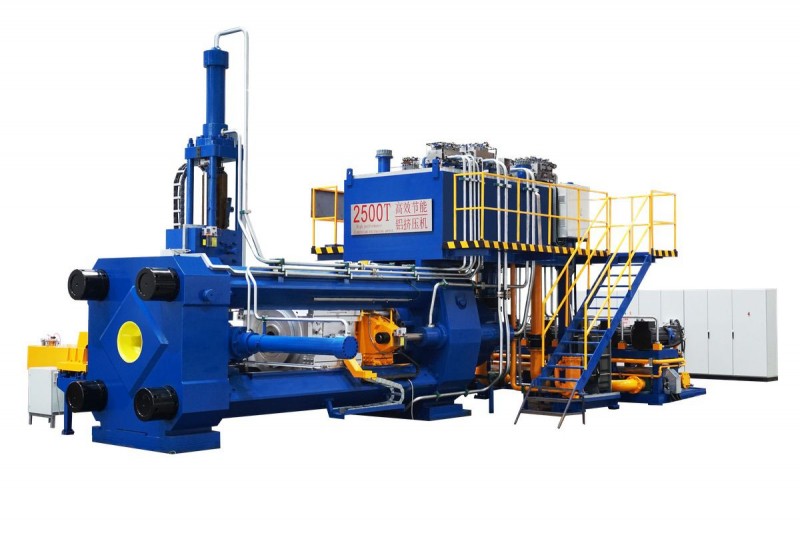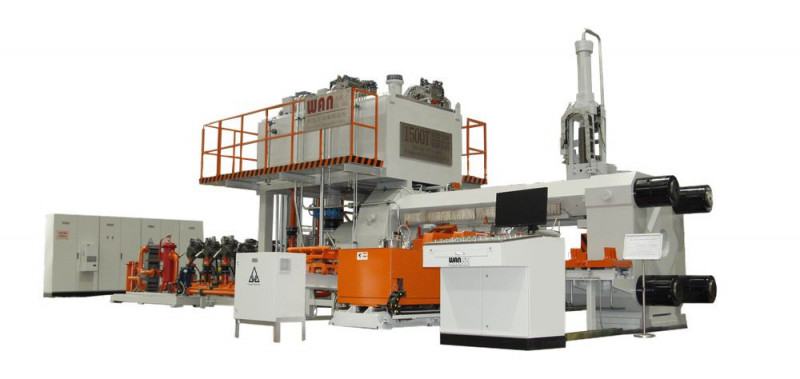The aluminum extrusion equipment is the manufacturing workhorses that’s accountable for changing aluminum billets to intricate and precise profiles employed in different industries. However, technical support is offered by the extrusion machine supplier after you have bought it.
It’s advised that preventive maintenance methods must be adhered to save on replacing costly parts on repeated inspection visits to the machine manufacturer. The system operators should be careful and pay attention to the following safety precautions while working with the machine for safe, continuous, and normal aluminum production.
Let’s jump in and discuss some precautions to check out while operating the aluminum extrusion machine.

Be on the lookout if the equipment’s operating parts are original. The slide plate should be wet, the induction device’s limit switch moved, screws must be loose, switch on the circulating cooling water, and ensure there is sufficient oil volume.
In addition to that, the oil temperature should be normal, as well as the oil pump sound should be the same. Also, check if the action transition and operation rate are normal.
Keeping the extrusion machine clean, along with the surrounding areas is vital. Oftentimes, aluminum debris and chips amass in the work areas, and could cause damages, fire and clogging. For this reason, you should consider cleaning up regularly and get rid of all aluminum chips and debris on the floor. This will prevent them from entering the aluminum extrusion machine’s interior.
Moreover, keeping the areas close to the press clean will boost its lifespan, and make the workspace much safer.
The die is the component that evaluates the aluminum, hence dictates the quality and shape of the final product. Therefore, it is crucial to check for cracks, deformities or wear on a regular basis. Also, make sure that the die is clean and lubricated.
Moreover, the die is supposed to be regulated often to prevent rusting as well as damage. Also, it is recommended to change worn or damaged dies immediately to reduce defects and downtime.
Maintaining the cooling system of the extrusion press is critical. The cooling system regulates the temperature of the extrusion press. Therefore, you should double-check it is working properly by looking for clogs, leakages or cooling damaged hoses.
Additionally, you should replace the parts that are worn out and clean the heat exchangers. If the cooling system is well-maintained, it won’t overheat but will maintain the quality of the final product.
The aluminum extrusion cylinder, the fluctuation of the heating instrument, and the heating condition of the extrusion shaft. Material bed, rear equipment operation status, and tractor. If all kinds of workers on the task site have gold tools (mats, pressed cakes, pins, molds, iron clips, hammer heads, pliers, cranes, screwdrivers, crowbars, insulation wool, plastic tools, and so on.)
Whether the task site is fixed and the die heating furnace is normal. Check if various cooling fans are running and quenching and if the measuring instruments are correct and perfect.
Regularly check the control and electrical systems of the extrusion machine. You should look for damaged wires, loose connections, and worn-out parts and be keen on the control software for any issues or updates. Make sure the safety features and emergency stop buttons are working properly to safeguard both the operators and the machine.
You should invest in better training for maintenance personnel and machine operators. Knowledgeable workers can identify possible issues on time and do routine maintenance jobs effectively. In addition, maintain detailed data of all the maintenance activities, such as tasks performed, dates, and issues encountered. Those records can assist in identifying patterns and improving maintenance procedures with time.
Additionally, the aluminum on the conveyor should be properly aligned with the material joint & head. Remember not to chafe the aluminum profiles against each other and shield the workpieces with different lengths from one another.
The aluminum profile needs to be straight backward and forward, and you shouldn’t incline the cut surface. It’s important to check the rack surface and the plastic parts packaging. Also, be careful that the material doesn’t rub against sharp objects like exposed iron racks.
It is essential to package and move the spraying, oxidation, sandblasting, punching, sawing, rounding, packaging, aging and other post-processing requirements of the natural materials and aluminum profiles separately.
When framing the aluminum profiles, it would be best to assess the cantilever ratio of the long profiles, thin-walled, circular arc & open profiles, interlocking, plates, solid small-space profiles, self-buckling, high-surface profiles or other aluminum profiles that are quite challenging to separate, along with secondary tools, like paper bushings.
Furthermore, it is essential for the gaskets to be organized correctly, in a descending manner, have the right spacing and quantity. This is because some are deformed, but keep in mind not to position gaskets atop sigh-surface aluminum profiles.
Plus, the gaskets should have the weight of the profiles, and the afterburner quantity, and you shouldn’t over-stack them. Lastly, overhead frame profiles must be stack overhead.
Also, check on the position of the stacked extruded profiles in the frame to prevent the mass of both ends that would result in the profiles piling up and sliding down. You also need to check the sawing speed; precisely the sawing surface burr, and modify the oil injection’s size in the machine.
Mostly, with industrial aluminum profiles, the pressing conditions (stroke, weight) of the sewing machine and the sawing operation should also be checked to prevent injury accidents.
You should apply force to any profile side when sawing. This helps to hinder snipping the saw when cutting, which could lead to damage on the material, and most importantly injuring yourself in the process.
For this reason, it is best to be cautious when working with the lifting material framing of the aluminum profile. Someone should lift the material in the middle for small, thin, long, flat, solid, small, and other easily bendable materials.
They should also consider whether the doubled length (sawing, oxidation, chuck allowance) will have an impact on the back (sawing, oxidation, shipping, packing, hoisting).
When handling aluminum multi-port extrusions, wear personal protective equipment (PPE).
The first line of protection for employees handling aluminum multi-port extrusions is personal protective equipment. In order to shield their eyes from potentially flying debris or metal chips, workers should wear safety goggles or glasses.
To protect hands from hot surfaces and sharp edges, gloves constructed of the proper materials are required. Examples of such gloves are cut-resistant and heat-resistant gloves. To avoid breathing in fumes or dust, workers doing welding or soldering should also put on protective clothes and respiratory gear.
Multi-port extrusions made of aluminum can be found in a variety of sizes and shapes, some of which are difficult to handle and quite heavy. Proper lifting techniques should be taught to employees in order to prevent back injuries, sprains, and strains.
When handling larger or heavier extrusions, it is advisable to employ mechanical lifting aids, like hoists or cranes, in order to reduce the possibility of accidents occurring throughout handling and installation.
Fumes and gases may be released during the welding, soldering, or cutting procedures used in extrusion. For a workplace to be safe, there must be enough ventilation. Local exhaust ventilation systems can efficiently eliminate dangerous airborne particles, shielding employees from potential health risks and respiratory problems.
Because aluminum is a flammable substance, sparks from welding or cutting may catch fire. Extinguishers, fire blankets, and a protocol for emergency escape should all be part of a comprehensive fire safety plan. Employees should receive training in fire safety procedures so they can react to possible fire situations swiftly and effectively.
Electrical safety procedures must be followed while using electrical equipment for welding or other processes. Electrical shocks or even fires can result from defective equipment or bad electrical connections. Employees should receive training on how to safely handle electrical equipment and recognize any potential electrical hazards.
Aluminum multi-port extrusions must be cut and machined using the right tools and cutting methods. To cool and lubricate the cutting process and avoid overheating, workers should use the proper cutting fluids. When cutting metal, there is less chance of incidents like metal shards flying off the blade when the right tools and techniques are used.
Make sure that any cleaning solutions, lubricants, or cutting fluids used in the extrusion process are safe for aluminum. Aluminum and certain substances might react, causing weakening or corrosion of the extrusions. Always use compatible fluids and materials according to the manufacturer's instructions.
It is imperative to conduct routine extrusion inspections and process tools in order to detect any flaws or problems that can jeopardize safety. Ensuring that the extrusions fulfil the necessary requirements and standards through quality control techniques reduces the possibility of utilizing defective or subpar components.
All personnel handling and processing aluminum multi-port extrusions must receive the necessary training. Emergency response plans, safety procedures, material compatibility and gear operation need to be part of the training. Accidents are less likely to occur when personnel are competent and have the tools necessary to complete activities safely and effectively.
Safety requires that the workspace be kept neat and orderly. Eliminating metal shavings, garbage, and trip hazards lowers the possibility of mishaps and guarantees a secure workplace for all workers.
● The double end faces of the extrusion machine have to be parallel by 0.05mm vertically, and 0.05mm non-perpendicularly. Both ends of this surface are flat, though the end plane requires polishing to Ra1 of 6 or more.
● There should be no flaws in the extrusion press stem's side surface or end plane;
● When clutching, there should be no axial bending and exterior force acting in its direction.
● For unmatched levelness and co-axiality, accurately align the stem of the extrusion machine with the center of the cylinder. Moreover, to dodge bumps during the entire extrusion procedure, these two should be far from each other, but the distance should be equal.
● It is definitely forbidden for the extrusion press stem to stick to the metal. The moment you find the sticky metal, you should remove it instantly. Applying a small amount of oil to the pressing stem will facilitate its removal.
● To prevent the temperature of the shaft from decreasing and increasing its usefulness randomly, the stem of the extrusion machine shouldn’t be left inside the heat extrusion section for a long time.
● The stem of the hollow extrusion machine and fixed gasket should ensure the concentricity and roughness of the inner hole with the guide machine stem and extrusion needle. Additionally, it should guarantee free movement of both parts inside the shaft hole.
● When the extrusion press stem's working end surface (inner and outer surface) becomes crushed and deformed, it needs to be fixed quickly.
● To ensure concentricity and evenness of the extrusion machine stem, the fastening mechanism of the compression sleeve at the base of the stem should be flexible, durable and easily adjustable. What’s more, it should be checked and modified frequently.
● To avoid safety hazards like bumps, you must utilize safety gear when loading, unloading and substituting the squeezing bar.
● Regular testing of the extrusion press stem is required for things like hardness, test level and size, alignment center ability, and so on, and any issues should be resolved quickly.
To finalize, there are numerous upsides of maintaining your aluminum extrusion press, but safety is the most important. Preserving a safe workspace and keeping the employees safe is reliant on the right safety measures, including having the right PPE, having ample ventilation, and placing fire safety procedures in place.
Moreover, it is important to properly manage the materials, take all the recommended electrical safety measures, and employ ergonomic techniques to operate a safe aluminum extrusion facility.
Industries can guarantee that their staff runs with the highest safety by training the employees and doing regular inspections. This will lower the risk of accidents and foster a culture of safety-first practices.


